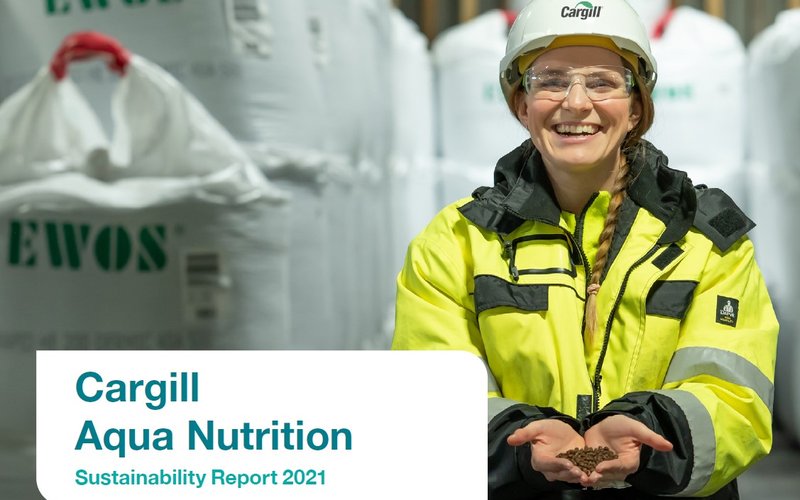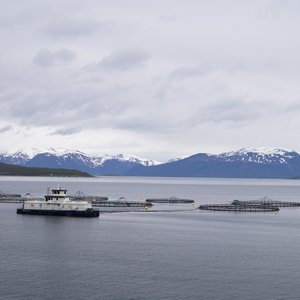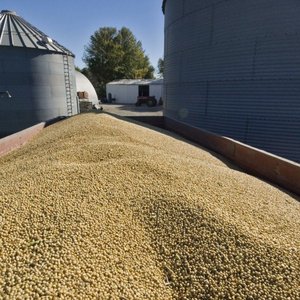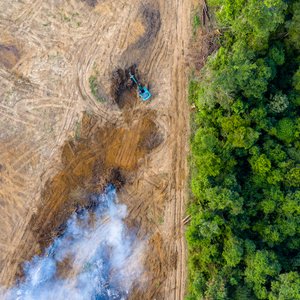Cargill Aqua Nutrition released its 2021 Sustainability Report that shares how the company has been accelerating its sustainable ingredient sourcing, prioritizing animal health and welfare, and driving innovation to help customers do more with less.
“The challenges ahead of us are significant. Aquaculture accounts for over half of the seafood produced globally, and with a rapidly growing global population, there is increasing demand on our industry to provide healthy nutrition for all. As one of the largest aquafeed businesses worldwide, Cargill Aqua Nutrition represents a critical link in the seafood supply chain. We are leveraging our scale, our expertise, and our commitment to sustainability to drive the necessary changes to meet the rising need for more responsibly produced seafood,” said Helene Ziv-Douki, president and group leader, Cargill Aqua Nutrition.
Driving circular and sustainable ingredients
For the first time, the company’s annual feed production—for both cold water and warm water species—surpassed the use of 50% co-product ingredients, and 40% of marine ingredients came from trimmings and byproducts.
When a key source of marine ingredients—blue whiting from the North Atlantic—lost its MSC certification in 2020, the company stopped buying it. Collaborating with other feed producers encouraged the local fisheries to act. In 2021, they entered a Fishery Improvement Program, working towards better long-term fisheries management strategies.
Scaling up the use of novel ingredients
To date, insect meals and algal oils have been the products commercially implemented through the company’s novel ingredient strategy. In 2021, Cargill helped launch the Millennial Salmon project to build on this. The company also extended its global partnership with Innovafeed to bring novel ingredients to scale. “Our commitment to jointly develop and market insect meal as a viable – and sustainable – ingredient in aquafeed will help our customers raise more seafood with less environmental impact,” the report says.
Refitting facilities for zero emissions
Bergneset feed mill in Norway was converted to become fully electrified, using renewable hydroelectricity— generating almost zero GHG emissions. The conversion was completed and launched in 2022.
Bringing SeaFurther™ Sustainability to life
In March 2021, SeaFurther™ Sustainability was launched, the company’s flagship sustainability program, helping farmers reduce the environmental footprint of their fish by at least 30% by 2030. By doing so, the company will help the industry save 2 billion kilograms of CO2—the equivalent of removing more than 400,000 cars from the road in one year. Just a few months after launch, producers from Norway, Scotland, and Chile joined Cargill on this path, and it is now actively identifying and implementing GHG reductions. This has paved the way for more sustainable supply chain opportunities in 2022 and the program’s expansion to more customers.
Cargill produces feeds for aquaculture in 40 facilities across 20 countries. However, 19 facilities of these facilities across 12 countries are dedicated aquafeed mills. The company produced 1.8 million tons of feed in 2021 with warm water feed production growing more than 9.6%.
Download the report here.










